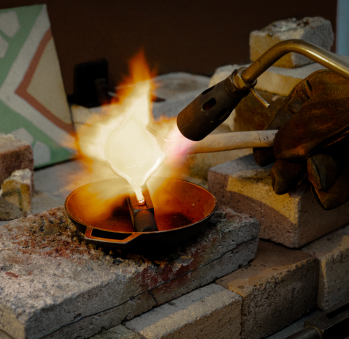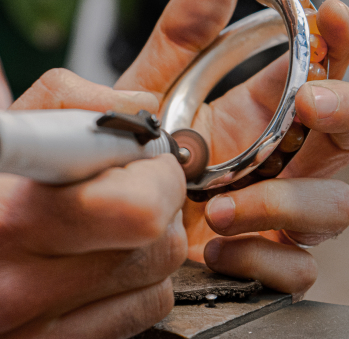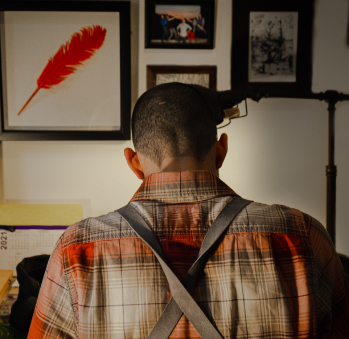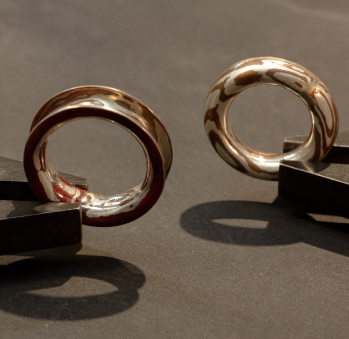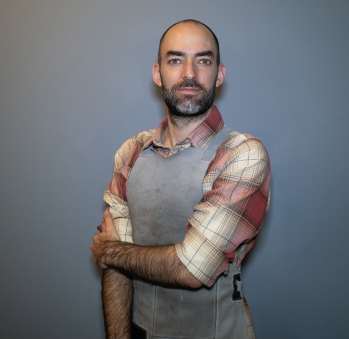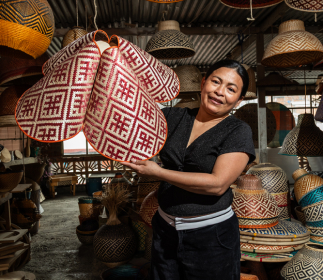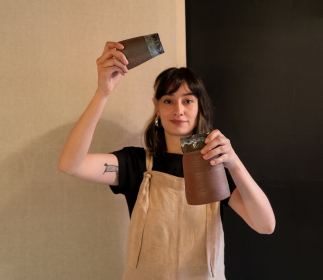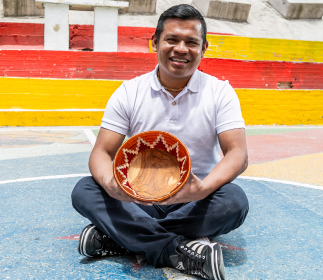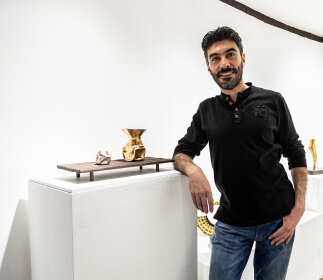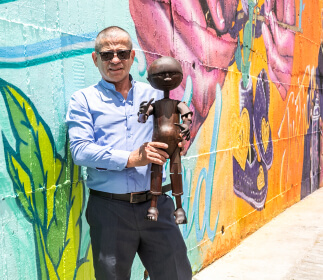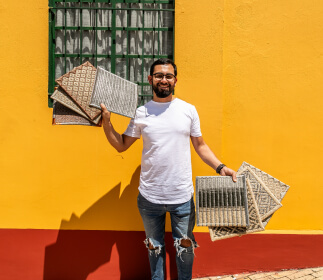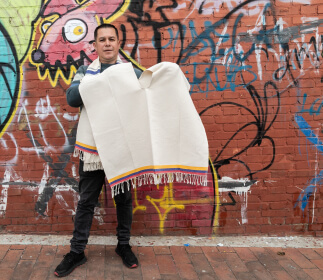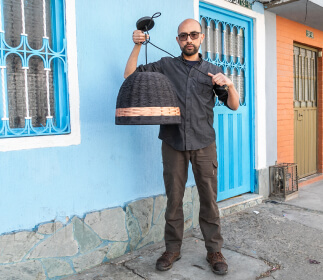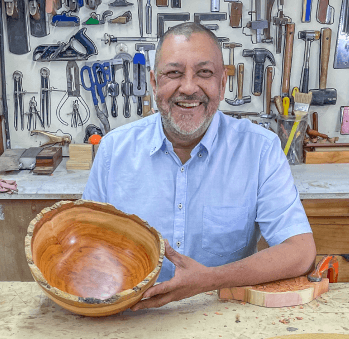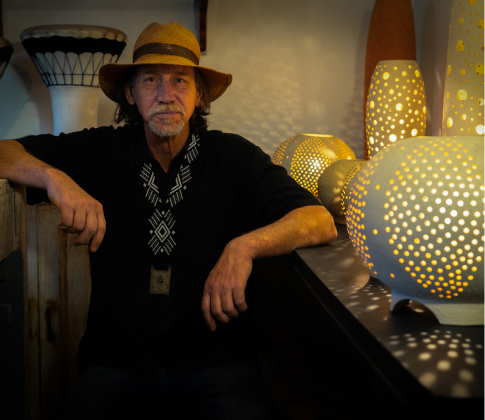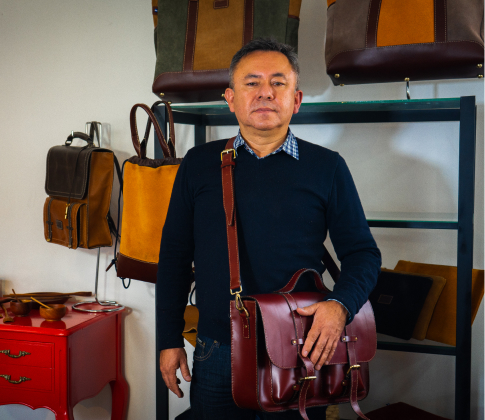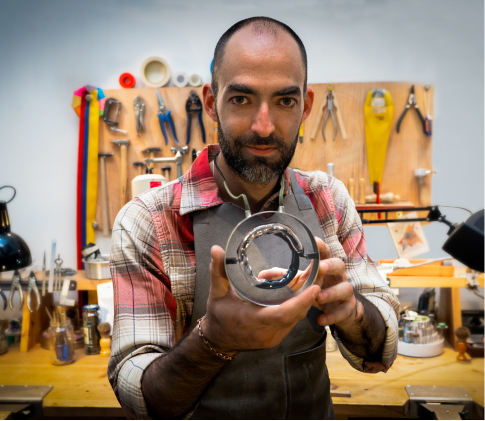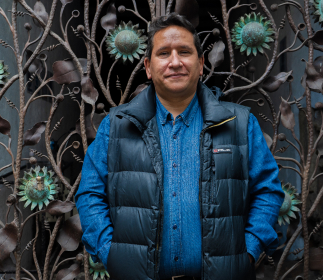Simón Mazuera
Workshop: Simón Mazuera - Arte en Joya
Craft: Jewelry/Fashion Jewelry
Trail: Bogotá Route
Location: Bogotá, Bogotá
He knows that he inherited his artistic vein from his family. His parents instilled a love for beauty in him. They also taught him to cherish the questions that are explored through scenes and universes we imagine with our hands. He discovered a special way he could communicate with his father, who was a painter: talking with him —and about him— through his experimentation with metals. This was the focus of his industrial design graduation thesis, which was influenced by his desire to learn about jewelry. His drive got stronger and eventually made his life’s work be centered around said desire.
Since then, he has not stopped exploring the techniques, languages, and sensibilities that can help him understand what it means to make jewelry with the clear goal of creating an artistic world from his craft. He attended the Escuela Massana in Barcelona and learned as much as he could from his teachers. At that time, he had already been taught a good amount of knowledge about the trade by goldsmith Francisco Piñeros in Colombia. He, however, wished he could learn even more. In Barcelona, he frequently bombarded his teachers with questions, asked for more work, and showed interest in learning how to solve every problem with his hands.
He was a pupil of Carles Codina and studied with Silvia Walz from Taller Perill and Jaime Díaz as well: all renowned masters. He returned to Colombia in late 2013, filled with technical skills and newly acquired knowledge. Soon after, he started organizing the ideas he got during the enormous intellectual effervescence he went through in the last couple of years. As a result, he set up a workshop in the neighborhood of San Felipe the following year. Still, he would have to split his time between that project and teaching his jewelry classes in the Materia Prima school in Bogotá.
Whenever he looks inward, he understands that he has been trying to find his constantly changing voice. Inside of it, he can find the sculptures of Richard Serra and Eduardo Chillida that he came to know so well and that helped him understand his own work in the field. In his own words, he began to “make steel micro-temples by folding the metal, which emulated the gesture of embracing space and wrapping something precious inside.”
He mixes his abstract and experimental practices —which he takes to jewelry biennials and exhibitions— with wares that have earned him a reputation —which include wedding rings. He puts all of his time and emotion into each one of his wares and feels the purest of joys when he employs the Japanese technique of Mokume-gane.
Craft
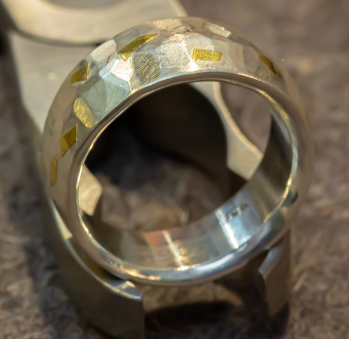
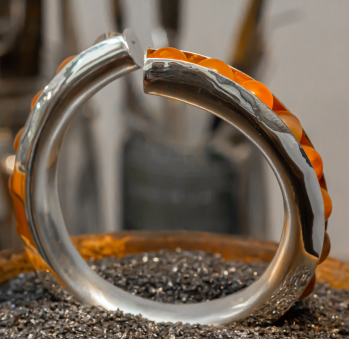
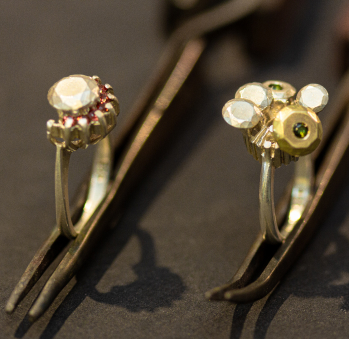



Artisans along the way
Artisans along the way
No puede copiar contenido de esta página








































